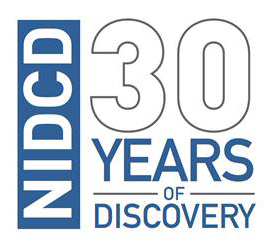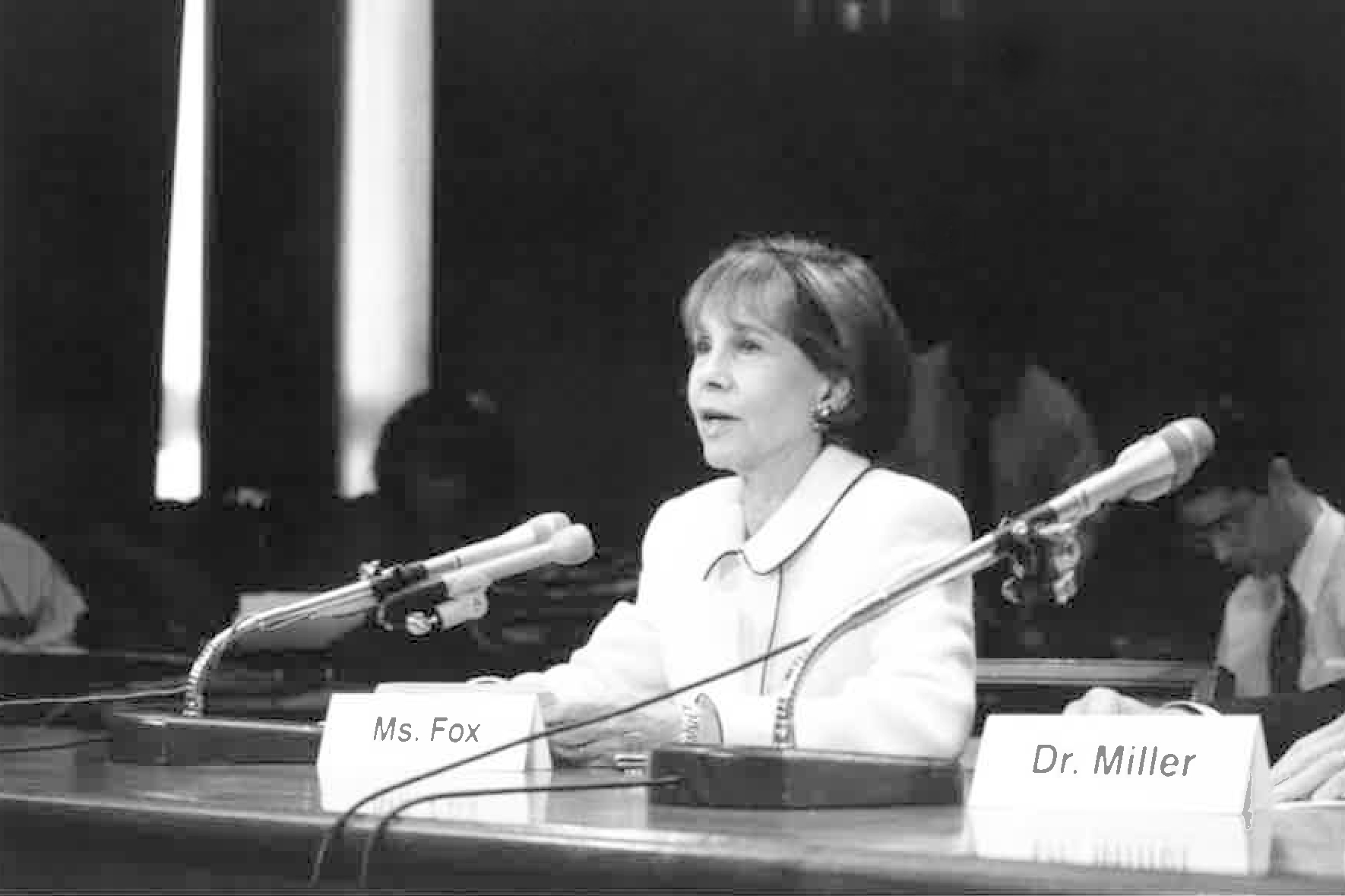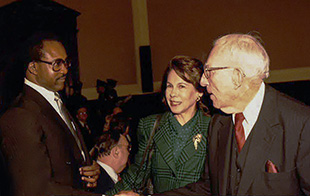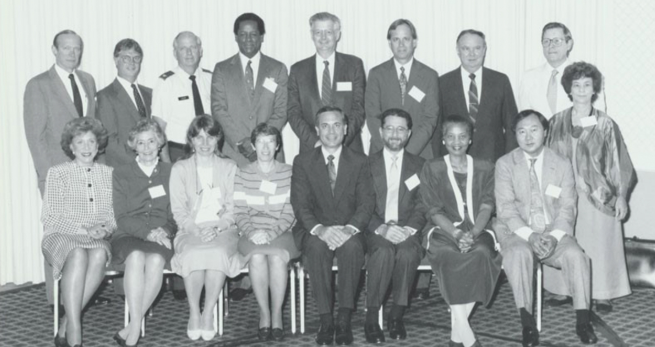
With the stroke of a pen, President Ronald Reagan signed P.L. 100-553 into law on October 28, 1988, establishing the National Institute on Deafness and Other Communication Disorders (NIDCD) as a new institute within the National Institutes of Health (NIH).
Until that time, research on communication sciences had been supported by the NIH through the National Institute of Neurological and Communicative Disorders and Stroke (now the National Institute of Neurological Disorders and Stroke). Individuals with hearing loss, researchers, clinicians, and professional societies worked together to advocate to Congress to authorize a new institute at the NIH. Representative Claude Pepper (D-FL) and Senator Tom Harkin (D-IA) introduced the National Deafness and Other Communications Disorders Act of 1988 (S. 1727), which quickly passed in Congress and was signed into law, establishing a new NIH institute dedicated to research and research training in hearing, balance, taste, smell, voice, speech, and language. At least 20 percent of U.S. adults have a significant impairment in one of these areas, resulting in challenges of daily life.
For 30 years, NIDCD research support has led to tremendous strides in uncovering knowledge in our research areas. The NIDCD’s focus is to bring national attention to normal and disordered processes of hearing, balance, taste, smell, voice, speech, and language, and to contribute to advances in biomedical and behavioral research that will improve the lives of the millions of people with these conditions.

Geraldine Dietz Fox, advocate for hearing research, testifies in support of the NIDCD. Fox was also instrumental in the establishment of the institute.
The NIDCD Hearing and Balance Program: Loss of hearing or balance imposes a significant social and economic burden on individuals, families, and communities. Millions of Americans experience a hearing or balance disorder at some point in their lives, especially as young children or older adults. Common examples include middle ear infections (otitis media), noise-induced and age-related hearing loss, tinnitus, dizziness, and vertigo. Hearing and balance disorders decrease quality of life and cross all ethnic and socioeconomic lines.
About 2 to 3 out of every 1,000 children in the U.S. are born with a detectable level of hearing loss in one or both ears, which can affect their speech, language, social, and cognitive development. In addition, approximately 36 million American adults report some degree of hearing loss and almost eight million adults report a chronic problem with balance. The NIDCD supports research that will lead to improved treatments for, and prevention of, hearing and balance disorders. Research projects within the NIDCD Hearing and Balance Program encompass more than half of the NIDCD’s portfolio. To study normal and disordered functions of the auditory and vestibular (balance) systems, the NIDCD employs a wide range of research approaches such as molecular genetics, cellular biology, biomedical imaging, nanotechnology, psychoacoustics, and structural and functional biology.

Former NFL player Larry Brown, Geraldine Fox, and Congressman Pepper discuss the importance of hearing research.
The NIDCD Taste and Smell Program: The NIDCD supports studies of the chemical senses—known as taste, smell, and chemethesis (chemically provoked irritation)—to enhance our understanding of how individuals communicate with their environment and how human chemosensory disorders can be diagnosed, treated, and perhaps prevented. Our olfactory (relating to our sense of smell) system loses its ability to regenerate cells as we age, so our ability to smell begins to decline.
Each year, more than 200,000 people visit a physician for taste and smell disorders. Many more taste and smell disorders go unreported. Although estimates vary, it is likely that more than one-third of adults over the age of 70 have a diminished ability to smell. Both taste and smell contribute to how we perceive flavor; consequently, problems with these senses can affect food intake, diet and overall nutrition, and health status. The NIDCD encourages further studies of chemosensory function, including the central and peripheral processing of sensory information, the development of better diagnostic tests to assess chemosensory loss, and the use of animal models to study why sensory losses occur and how to prevent them.

NIDCD’s first Advisory Council, established in 1989. Members included scientist Robert Ruben and former NFL player Larry Brown (back row, center), who were instrumental in advocating for establishing the NIDCD.
The NIDCD Voice, Speech, and Language Program: Disorders involving voice, speech, or language can have an overwhelming effect on an individual’s health and quality of life. These disorders affect people of all ages, including people with or without hearing impairment, children with autism, people who stutter, and adults with acquired communication disorders. Voice, speech, and language disorders also come at a significant cost. The societal burden of vocal cord disorders, for example, is estimated at $11 billion annually due to work-related disability, lost productivity, and direct health care costs.
Nearly 1 in 12 (7.7 percent) of U.S. children ages 3-17 has had a disorder related to voice, speech, language, or swallowing in the past 12 months. By the first grade, roughly 5 percent of children have noticeable speech disorders. In children, delayed acquisition or other impairment of speech and language can often be a significant predictor of future academic, social, vocational, and adaptive outcomes.
Read more about the history of the NIDCD:

